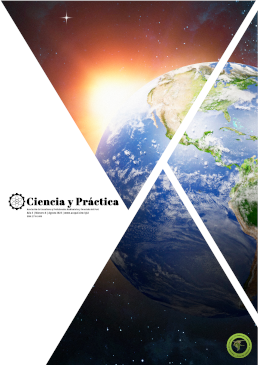Labor productivity and logistical competitiveness of the peruvian economy in relation to other countries in the region (2010-2022)
DOI:
https://doi.org/10.52109/cyp2023650Keywords:
productivity, competitiveness, Peruvian economy, other countries, regionAbstract
The objective of this study was to verify the evolution of labor productivity and logistics competitiveness in the Peruvian economy compared to other countries in the region during the period from 2010 to 2022. The aim was to examine the factors that have influenced productive and competitive performance and identify strengths and areas for improvement in relation to the region. The research methodology used was quantitative and non-experimental, adopting a longitudinal approach covering the years 2010 to 2022. The population considered in the study was the macroeconomic indicators of both Peru and Latin America and the Caribbean. By analyzing these indicators, it was possible to evaluate the labor productivity and logistics competitiveness of Peru compared to the region. Various techniques, such as ANOVA, were applied to examine the significance of observed changes in the different factors analyzed. The results obtained revealed that Peru has made significant progress in terms of labor productivity and logistics competitiveness during the analyzed period. The country has slightly exceeded the regional average in several aspects, such as infrastructure quality and efficiency in customs clearance. It has also excelled in coordinating shipments at competitive prices. However, areas for improvement were also identified, such as ease of locating and tracking shipments. Although Peru has achieved greater punctuality in the frequency of shipments arriving at the recipient, there is a recognized need to strengthen tracking and locating systems. In summary, this study provides an overview of the evolution of labor productivity and logistics competitiveness in Peru compared to other countries in the region. The results highlight the achievements made by the country but also emphasize areas that require attention and continuous improvement. These findings can be useful for the formulation of policies and strategies that further drive economic development and competitiveness of Peru in the regional context.
Downloads
References
Agudelo, & Escobar. (2022). Análisis de la productividad laboral en el sector panificación del Valle del Cauca, Colombia. Valle del Cauca: Revista de Ciencias Sociales . Obtenido de ISSN-E: 2477-9431
Bank., W. (2021). World Development Indicators database. . Indicators database. Obtenido de https://databank.worldbank.org/source/world-development-indicators
Becker. (1964). Human capital: A theoretical and empirical analysis, with special reference to education. . Chicago: The University of Chicago Press.
Bennis. (1989). Managins the dream: Leadership in the 21st century. Journal of Organizational Change management. Obtenido de https://doi.org/10.1108/09534818910134040
CEPAL. (21 de 8 de 2021). Crecimiento de América Latina y el Caribe en 2021 no alcanzará a revertir los efectos adversos de la pandemia. Obtenido de shorturl.at/clsyM
Christopher. (2016). Logistics and supply chain management: Creating value-adding networks . (5th ed.). Pearson.
Drucker. (1954). The practice of management. Harper & Row. Harper & Row.
González. (2018). Puertos emergentes: la otra cara de la Ruta de la Seda. China. Obtenido de https://www.esglobal.org/puertos-emergentes-la-otra-cara-de-la-ruta-de-la-seda/
Hausmann, R. (2017). Diversification, innovation, and growth in Peru (No. 131). . CID Working Papers. https://www.hks.harvard.edu/sites/default/files/centers/mrcbg/programs/smart/articles/hausmannpaper.pdf
Hernández, Alejandre, & Pineda. (2022). Análisis y configuración del desarrollo regional. Un enfoque desde los actores. Ciudad de México: Espacios públicos. Obtenido de https://espaciospublicos.uaemex.mx/article/view/19747
Hernández, F. B. (2018). Metodologia de la Investigación. Obtenido de https://www.academia.edu/23889615/._Hern%C3%A1ndez_Sampieri_R._Fern%C3%A1ndez_Collado_C._y_Baptista_Lucio_M._P_2010_
Herzberg. (1966). Work and the nature of man. . World Publishing Company.
Imai. (1986). Kaizen: The key to Japan's competitive success. . McGraw-Hill.
Lovelock, & Patterson. (2018). Services marketing. Pearson.
Munguía, & Becerril. (2021). Competitividad logistica de los puertos de la inicitativa Franja Ruta. China: México y la cuenta del pacífico. doi:10.32870/mycp.v11i31.740
Ñopo, H. (2015). Education quality and economic growth: New policy directions for Latin America. Economía, 39(77), 153-197. . doi:doi:10.1353/eco.2015.0020
OIT. (2020). Impactos en el mercado de trabajo y los ingresos en América Latina y el Caribe. Lima: OIT.
Porter. (1985). Competitive advantage: Creating and sustaining superior performance. Free Press.
Senge. (1990). The fifth discipline: The art and practice of the learning organization. Doubleday.: The art and practice of the learning organization. .
Downloads
Published
How to Cite
Issue
Section
License
Copyright (c) 2023 Asociación de Consultores y Profesionales Ambientales y Forestales del Perú

This work is licensed under a Creative Commons Attribution-NonCommercial-ShareAlike 4.0 International License.





